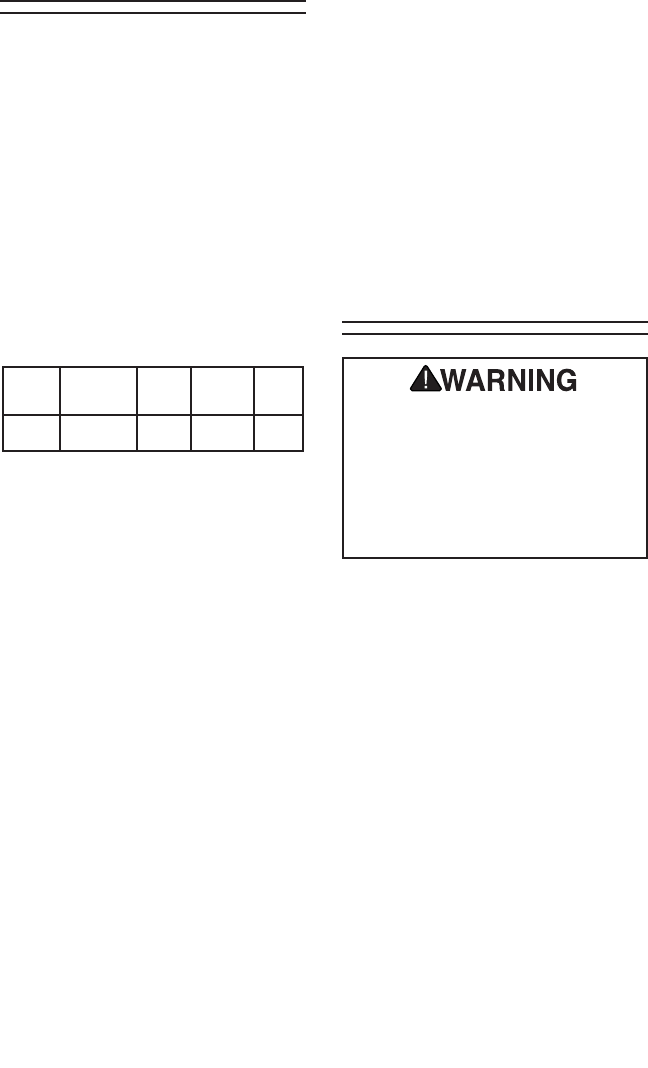
Model H7757 3" Mini Wool Buffer-12-
Wheel Selection
The Model H7757 only accepts Type 1 3"
x
1
⁄2" wheels with a
1
⁄4" bore.
Aluminum oxide and silicon carbide wheels
are marked in a somewhat uniform manner
by all major manufacturers. Understanding
these markings will help you understand
the capabilities of various wheels. Always
refer to the manufacturer’s grinding recom-
mendations when selecting a wheel for
your project.
The basic format for wheel numbering
is:
Prefix
Abrasive
Type
Grit
Size
Grade
Type
Bond
Type
Type 1
A 60 L V
The Prefix is the manufacturer’s designa-
tion for a particular standardized type
of grinding wheel. Different Type pre-
fixes indicate different wheel shapes and
designs. For more information on wheel
types, ask a person with grinding experi-
ence or consult your local library.
The most common Abrasive Types used
are A for Aluminum Oxide and C for Silicon
Carbide, and occasionally SG for Seeded
Gel.
The Grit Size is a number that refers to
the size of the abrasive grain in the wheel.
The lower the number, the coarser the
wheel. Grit sizes range from 10, which is a
very coarse grit used for roughing, to 220,
which is usually the upper range for fine
finish work.
Grade Type is an indication of the hard-
ness of the wheel—“A” being the softest
and “Z” being the hardest.
Bond Type refers to the type of bonding
material used to hold the abrasive material.
Most general purpose wheels will have a
“V” indicating Vitrified Clay is used. Vitrified
Clay provides high strength and good
porosity. The other common bond type is
“B” for resin where synthetic resins are
used. These are used to grind cemented
carbide and ceramic materials.
There may be other numbers inserted that
have meaning for a particular type of wheel.
Refer to the wheel manufacturer’s technical
data for a complete explanation.
Wheel Inspection
Before mounting a new grinding wheel, it
must be inspected. DO NOT assume that
a wheel is in sound condition just because
it is new—often, damage can occur during
shipping, with age, or with exposure to
moisture.
First, the wheel should be given a Visual
Inspection. Look for any cracks, chips,
nicks, or dents in the surface of the wheel.
If you see any of these, DO NOT use the
wheel.
Second, the wheel should be given a Ring
Test. This test will give you an indication of
any internal damage that may not be obvi-
ous during a visual inspection.
The hazards of using a damaged
grinding wheel include flying chunks
of sharp abrasive material that could
cause serious injury or death. Inspect
every grinding wheel before it is
mounted and DO NOT use a damaged
grinding wheel!


















